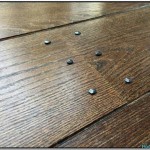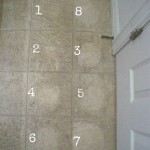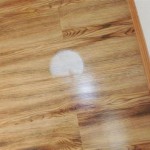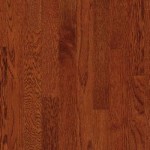Steel Mesh Flooring: Properties, Applications, and Considerations
Steel mesh flooring, a ubiquitous component in various industrial, commercial, and even residential settings, offers a durable, versatile, and cost-effective solution for creating elevated platforms, walkways, and mezzanines. This type of flooring consists of interconnected steel bars that form a grid-like structure, providing a high strength-to-weight ratio and allowing for light, air, and water to pass through. The specific design and construction of steel mesh flooring are tailored to meet the demands of diverse environmental conditions and load-bearing requirements.
The manufacturing process typically involves welding or pressure-locking steel bars together. The steel used is often carbon steel or stainless steel, each offering distinct advantages in terms of strength, corrosion resistance, and cost. Carbon steel gratings are commonly galvanized to enhance their resistance to rust and oxidation, making them suitable for outdoor applications where exposure to moisture is prevalent. Stainless steel gratings, on the other hand, provide superior corrosion resistance and are preferred in environments where hygiene and cleanliness are paramount, such as food processing plants and pharmaceutical facilities.
The load-bearing capacity of steel mesh flooring is determined by factors such as the steel grade, bar dimensions (thickness and depth), bearing bar spacing, and crossbar spacing. Proper engineering calculations are critical to ensure that the flooring can safely support the intended load, whether it's pedestrian traffic, heavy machinery, or stored materials. Furthermore, safety standards and regulations often dictate specific load requirements and permissible deflection limits that must be adhered to during design and installation.
The open grid design of steel mesh flooring presents both advantages and disadvantages. While it allows for efficient drainage and ventilation, it also poses a potential hazard for small objects or debris to fall through, especially if the mesh openings are large. Therefore, careful consideration must be given to the aperture size to balance the benefits of permeability with the need to minimize the risk of dropped objects. In areas where this is a particular concern, finer mesh gratings or the addition of a solid surface overlay might be necessary.
Key Point 1: Advantages of Steel Mesh Flooring
Steel mesh flooring offers a multitude of benefits that make it a preferred choice for a wide range of applications. One of the primary advantages is its exceptional strength-to-weight ratio. The interconnected grid structure provides considerable load-bearing capacity while minimizing the overall weight of the flooring system. This is particularly important in situations where supporting structures have limited load-bearing capabilities or where weight reduction is a critical design consideration.
Another significant advantage is the open grid design, which facilitates efficient drainage and ventilation. Liquids can readily pass through the mesh openings, preventing water accumulation and reducing the risk of slips and falls. Similarly, the free flow of air promotes ventilation, which can be crucial in industrial environments where temperature regulation or the removal of fumes and gases is necessary. This open design also allows for better light penetration, reducing the need for artificial lighting in some instances.
Durability is another key attribute of steel mesh flooring. Steel, particularly when galvanized or stainless steel, is highly resistant to wear, impact, and corrosion. This translates to a long service life with minimal maintenance requirements. Steel mesh flooring can withstand heavy traffic, exposure to harsh chemicals, and extreme temperatures without significant degradation. The long-term cost-effectiveness of steel mesh flooring stems from its durability and minimal maintenance needs.
Installation is also relatively straightforward, especially with prefabricated grating panels. These panels can be easily cut and fitted to specific dimensions, reducing on-site fabrication time and minimizing installation costs. The modular nature of steel mesh flooring also allows for easy reconfiguration and expansion as needed.
Safety is further enhanced by the availability of various surface treatments, such as serrated edges or anti-slip coatings. These treatments improve traction and reduce the risk of slips and falls, particularly in wet or oily environments. The open grid design also helps to prevent the accumulation of debris, which can further reduce the risk of accidents.
Key Point 2: Common Applications of Steel Mesh Flooring
The versatility of steel mesh flooring makes it suitable for a diverse array of applications across various industries. One of the most common applications is in industrial settings, where it is used to create elevated platforms, walkways, and mezzanines. These structures provide safe and efficient access to machinery, equipment, and storage areas. In factories and warehouses, steel mesh flooring is often used for catwalks, stair treads, and work platforms.
In the construction industry, steel mesh flooring is frequently used for scaffolding, temporary walkways, and formwork support. Its high strength and durability make it ideal for supporting heavy loads during construction projects. The open grid design also allows for easy drainage of rainwater and debris, keeping the work area clean and safe.
Wastewater treatment plants and chemical processing facilities often utilize steel mesh flooring due to its corrosion resistance. Stainless steel gratings are particularly well-suited for these environments, as they can withstand exposure to corrosive chemicals and harsh conditions. The open grid design also allows for easy inspection and maintenance of underground pipes and equipment.
In the transportation sector, steel mesh flooring is used in pedestrian bridges, railway platforms, and vehicle ramps. Its high strength and durability ensure the safety of pedestrians and vehicles alike. The open grid design also allows for efficient drainage and prevents the accumulation of ice and snow in cold climates.
Commercial buildings, such as shopping malls and office complexes, also incorporate steel mesh flooring in various applications, including stair treads, balconies, and ventilation grilles. The aesthetic appeal of steel mesh flooring can be enhanced with various finishes and coatings, making it a suitable option for both functional and decorative purposes.
Beyond these core applications, steel mesh flooring finds use in specialized areas such as shipyards, offshore platforms, and mining operations, each leveraging the material’s durability, strength, and adaptability to harsh conditions.
Key Point 3: Design and Installation Considerations
Proper design and installation are crucial to ensure the safety, performance, and longevity of steel mesh flooring. The design process should begin with a thorough assessment of the intended load-bearing requirements, including the maximum anticipated weight and the frequency of loading. Engineering calculations should be performed to determine the appropriate steel grade, bar dimensions, and spacing to meet these requirements.
Safety standards and regulations must be carefully considered during the design phase. These standards often specify minimum load factors, permissible deflection limits, and other safety requirements that must be adhered to. Local building codes should also be consulted to ensure compliance with all applicable regulations.
The sub-structure supporting the steel mesh flooring must be adequately designed to distribute the load evenly. The spacing and size of the support beams or columns should be determined based on the load-bearing capacity of the flooring and the anticipated load distribution. The sub-structure should also be designed to resist corrosion and other environmental factors.
Installation should be performed by experienced professionals who are familiar with the proper techniques and safety precautions. The grating panels should be securely fastened to the supporting structure using appropriate fasteners, such as bolts, clips, or welds. The fasteners should be selected based on the steel grade and the environmental conditions.
Proper drainage and ventilation should be considered during the installation process. The flooring should be sloped slightly to facilitate drainage, and adequate ventilation should be provided to prevent the accumulation of moisture or fumes. Any openings or gaps in the flooring should be sealed to prevent the entry of debris or pests.
Regular inspection and maintenance are essential to ensure the ongoing safety and performance of steel mesh flooring. The flooring should be inspected periodically for signs of damage, corrosion, or loose fasteners. Any necessary repairs or replacements should be performed promptly to prevent further deterioration. A routine maintenance schedule can significantly extend the lifespan of the installation.
The selection of appropriate protective coatings like galvanization, powder coating, or epoxy application should complement the intended environment to mitigate corrosion and extend the operational lifespan of the steel mesh flooring. Furthermore, attention to detail during installation, such as proper alignment and leveling, can prevent premature wear and ensure a stable and safe surface.
Ultimately, selecting steel mesh flooring requires a comprehensive understanding of its properties, applications, and design considerations. A thorough assessment of these factors ensures that the chosen flooring solution meets the specific needs of the project while providing a safe, durable, and cost-effective platform for various activities.

Walk This Way For Mesh Flooring

Tec Sieve Expanded Metal Floor Mesh China Made In Com

Flooring Mesh Grating Galvanized Steel Floor From China

Mild Steel Open Flooring Galvanised Or Coloured Metal Supplies

Woven Wire Mesh Flooring Metal Inter Screen

Floor Mesh Steel Grating Welded Supply From China

Floor Grating Heavy Duty Flooring Lang Fulton

Floor Grating Heel Proof Flooring Panels Lang Fulton

Open Mesh Flooring

Industrial Steel Flooring Open Mesh Metal Grate Steelway
Related Posts








